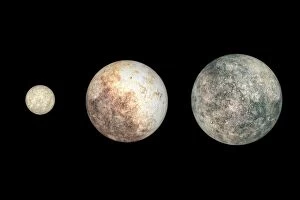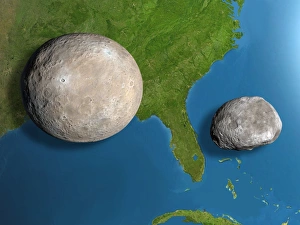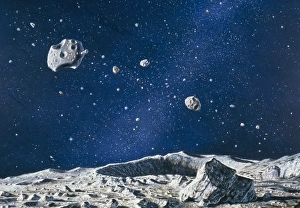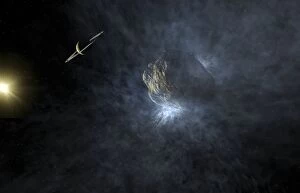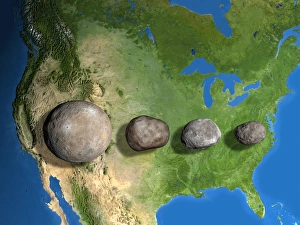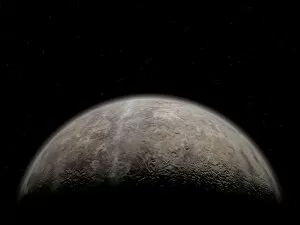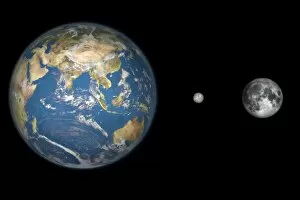Minor Planet Collection
Exploring the vastness of our solar system, we encounter a fascinating realm known as minor planets
All Professionally Made to Order for Quick Shipping
Exploring the vastness of our solar system, we encounter a fascinating realm known as minor planets. These celestial bodies, also referred to as dwarf planets, captivate our imagination with their enigmatic nature. In this captivating artwork, an alien planet and asteroid stand side by side, showcasing the diverse inhabitants of our cosmic neighborhood. As we delve deeper into this extraterrestrial world, we come across two prominent asteroids: Ceres and Vesta. Through meticulous scale artwork, we gain perspective on their immense size and significance within the asteroid belt. The intricate details in these artistic renderings transport us to a distant space where these rocky formations hold secrets waiting to be unraveled. Venturing further into the unknown reaches of space, Chiron emerges before us in all its glory through computer-generated artistry. This unique minor planet intrigues astronomers with its peculiar orbit between Saturn and Uranus – a true marvel that continues to puzzle scientists. However, not all encounters with they are purely observational. As depicted in these awe-inspiring illustrations, some asteroids approach perilously close to Earth's vicinity. These heart-stopping moments remind us of the delicate balance between our home planet and the vast cosmos surrounding it. In an attempt to comprehend their magnitude relative to Earth's familiar landscapes, artists have skillfully created scale artworks portraying the four largest asteroids - Ceres being one among them - against recognizable backdrops. Such visualizations allow us to grasp just how colossal these seemingly insignificant fragments can truly be. Minor planets offer glimpses into worlds beyond our own; they ignite curiosity about what lies beyond our atmosphere and inspire dreams of interstellar exploration. With each discovery comes new knowledge about the universe we inhabit – reminding us that even amidst infinite possibilities there is still much left for humanity to uncover in this grand tapestry of stars and celestial wonders.

